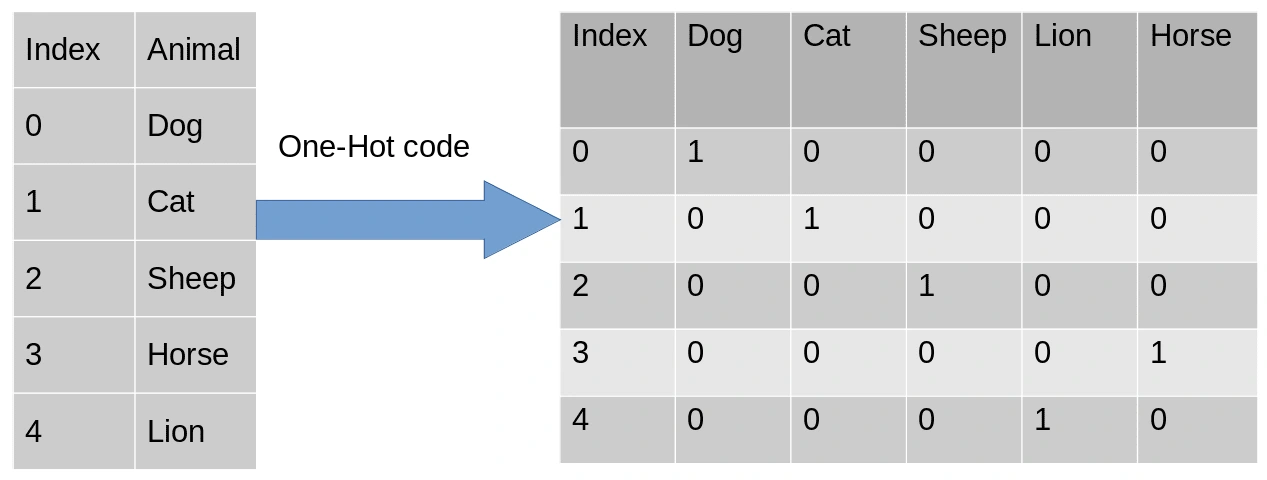One-Hot Encoding: A Primer on Categorical Data

Understanding One-Hot Encoding
In data science and machine learning, processing and interpreting data accurately is important, and one-hot encoding plays a pivotal role in this. It's a method that may seem complex at first, but it’s an essential tool for turning categorical data into a machine-readable form. Let's explore this concept in a simpler manner.
Consider a dataset containing various types of information. Some of this data is numerical, but some are categories, like 'Dog' or 'Cat'. Machine learning models, designed mainly to interpret numbers, find it challenging to process categorical data. This is where one-hot encoding becomes valuable. It translates categories into a numerical language, allowing these models to process and analyze them efficiently.
Why One-Hot Encoding Over Other Methods
The question arises: why not simply assign a numerical value to each category, like 0 for 'Dog' and 1 for 'Cat'? This approach, known as label encoding has limitations. It can unintentionally introduce a sense of hierarchy or order in the data. For instance, assigning '1' to 'Cat' and '0' to 'Dog' might lead the model to perceive 'Cat' as having a higher value or significance than 'Dog', which is not the intended inference. One-hot encoding eliminates this bias, treating each category with equal importance and distinctiveness.

One-Hot Encoding Process
The process of one-hot encoding can be broken down into simple steps:
1. Identification of Unique Categories: The first step is to analyze the dataset to identify all unique categories within it. This step forms the foundation for the encoding process.
2. Creation of New Columns: For each unique category identified, a new column is created in the dataset. This step is crucial as it lays down the structure for representing each category in binary terms.
3. Binary Representation: In each new column created, the category it represents is marked with a ‘1’, while all other columns are marked with ‘0’s. This binary representation ensures that each category is distinctly and accurately represented in numerical terms.
Does that make sense?
If not, I got you!
One-Hot Encoding Example
Let’s understand with an example by adding more Animals other than Dogs and Cats to the categorical data:
In one-hot encoding, the categorical parameters will prepare separate columns for Dog, Cat, Sheep, Horse, and Lion labels. So, wherever there is a Dog, the values will be [10000], Cat [01000], Sheep [00100], Lion [00001], and Horse [00010]. Once this process is complete and the data is now in numerical form, the data can be fed to your machine learning model for understanding.

Limitations of One-Hot Encoding
Even though one-hot encoding sounds like a great method to use, there are some limitations. When you have a lot of different categories, the size of your data can grow a lot. This is sometimes called the "curse of dimensionality." It means your computer has to work harder to make sense of all that extra information. Also, if your categories have a natural order (like a ranking system), one-hot encoding won’t naturally show that order. You'll have to find another way to include that information.
When one-hot encoding isn't the best choice, you can use other methods. Label encoding gives each category a different number. Binary encoding mixes numbers in a unique way. Embedding is another method, often used in more advanced models like those in deep learning. Each of these methods has its benefits and is better for certain kinds of data.
Implementation of One-Hot Encoding
Implementing one-hot encoding is made simpler with data processing tools available in programming languages like Python. Libraries such as Pandas and Scikit-learn provide functions like 'get_dummies' and 'OneHotEncoder', which automate the conversion of categorical columns into one-hot encoded data. These tools speed up the process, making it accessible even to those new to machine learning and data science.

Pandas

Scikit-learn
Wrapping things up, it's pretty obvious that One-Hot Encoding isn't just a tool, it's a useful technique in machine learning. Sure, it might make your data a bit bulkier, but its knack for kicking bias to the curb and treating categories equally is what makes it indispensable. Plus, with programming tools constantly evolving, slapping One-Hot Encoding into your data has become a piece of cake, no matter if you're just dipping your toes into data science or you've been swimming in it for years. Bottom line: getting a handle on techniques like One-Hot Encoding is crucial for anyone looking to make waves in machine learning and decision-making. I am excited to see you take steps forward in your journey in machine learning.
For references to One-Hot encoding check the documentation below.
Pandas
Skikit-learn
Like this project
Posted Jan 7, 2024
Explore One-Hot Encoding in Machine Learning: a key technique to transform categorical data for model accuracy, overcoming biases and complexities.
Likes
0
Views
11






